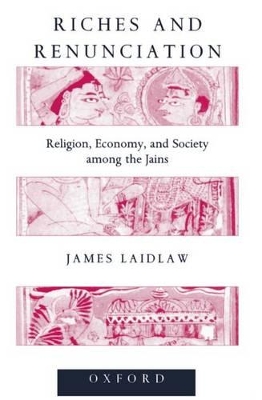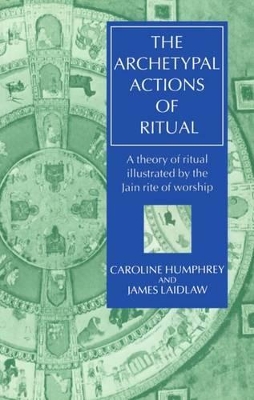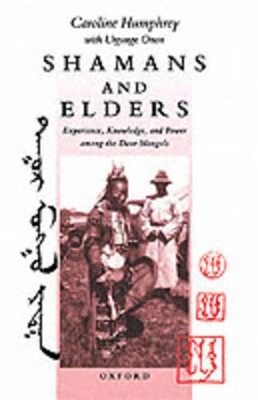Oxford Studies in Social and Cultural Anthropology
3 total works
How can one live by impossible ideals and values? The Jains of India are a flourishing and prosperous community, but their religion is focused on the teaching and example of ascetic renouncers, whose austere regime is actually dedicated to ending worldly life and often culminates in a fast to death. This book draws upon a detailed study of an urban Jain community in Jaipur, north-west India, to offer the fullest account yet given of Jain religious belief and
practice. It shows how renunciation and asceticism play a central part in the life of a thriving business community, and how world-renunciation combines for Jain families with the pursuit of worldly happiness.
The book is in five parts. Part I introduces the vivid mythology and doctrine of Jainism, and the traditions of Jain renouncers. Part II discusses the relations of Jains with other groups in Indian society, the politics of leadership on Jain communities, and the history, character, and composition of the Jain community in Jaipur. Part III contains detailed analyses of lay ascetic practices such as fasting and confession, traditions of imagery and iconography, and key religious ideas, such
as the paradoxical doctrine of 'non-violence' (ahimsa). These are shown to turn on complex conceptions of the body and contrasting moral topographies of self. Part IV concerns relations between lay Jains and renouncers, and draws on recent writing on exchange and value to analyse the pivotal place
of alms-giving in the Jain religion. Part V describes some of the closest connections between riches and renunciation, and shows how the pan-Indian festival of Diwali is adapted to distinctively Jain values and concerns.
practice. It shows how renunciation and asceticism play a central part in the life of a thriving business community, and how world-renunciation combines for Jain families with the pursuit of worldly happiness.
The book is in five parts. Part I introduces the vivid mythology and doctrine of Jainism, and the traditions of Jain renouncers. Part II discusses the relations of Jains with other groups in Indian society, the politics of leadership on Jain communities, and the history, character, and composition of the Jain community in Jaipur. Part III contains detailed analyses of lay ascetic practices such as fasting and confession, traditions of imagery and iconography, and key religious ideas, such
as the paradoxical doctrine of 'non-violence' (ahimsa). These are shown to turn on complex conceptions of the body and contrasting moral topographies of self. Part IV concerns relations between lay Jains and renouncers, and draws on recent writing on exchange and value to analyse the pivotal place
of alms-giving in the Jain religion. Part V describes some of the closest connections between riches and renunciation, and shows how the pan-Indian festival of Diwali is adapted to distinctively Jain values and concerns.
Religious rituals can provoke a deeply ambigious reaction in those who practise them. What happens in religious traditions when the nature of the ritual is questioned, but the practice of performing rituals is not itself abandoned? This book draws on the authors' observations of such reactions among Jains in western India, and asks why they can tell us about ritual as a universal mode of human action.
Most anthropologists have assumed that ritual is a special kind of happening, which requires a special kind of interpretation. The authors argue that 'ritual' is a quality which can in principle apply to any kind of action. The question they try to answer is: what is distinctive about actions which are ritualized? They reject the common view that ritual carries intrinsic meaning, and explore the apparent paradox that ritualization, which makes action in an important sense non-intentional, is
itself the result of an intentional act - the adoption by the actor of what the authors call the 'ritual commitment'.
Most anthropologists have assumed that ritual is a special kind of happening, which requires a special kind of interpretation. The authors argue that 'ritual' is a quality which can in principle apply to any kind of action. The question they try to answer is: what is distinctive about actions which are ritualized? They reject the common view that ritual carries intrinsic meaning, and explore the apparent paradox that ritualization, which makes action in an important sense non-intentional, is
itself the result of an intentional act - the adoption by the actor of what the authors call the 'ritual commitment'.
Shamans and Elders is a major study of Mongolian shamanism and society, past and present. It presents a wealth of new information, and offers a fresh understanding of the widespread phenomenon of shamanism.
This unique and detailed analysis of a fascinating subject combines a discussion of Urgunge Onon's memories of shamanism with Caroline Humphrey's text- and field-based analytical knowledge of Central and North Asian shamanism. It covers among other things: notions of gender in Mongolian society, including male and female traditions in ritual, female shamans, and goddess worship; attitudes to death, and funeral rituals; the importance of old men and of ancestors;
and Daur notions of landscape within their direct experience (the importance of the sky, of the mountains, of the forest, rivers, etc.) and beyond.
In covering these diverse areas, the authors depart from the general cultural models usually offered in discussions of shamanism, providing a new vision of 'shamanism' as made up of fragmentary, non-formularized parts. It presents much-needed insight on a little-known world, and points to an original new way of doing anthropology.
This unique and detailed analysis of a fascinating subject combines a discussion of Urgunge Onon's memories of shamanism with Caroline Humphrey's text- and field-based analytical knowledge of Central and North Asian shamanism. It covers among other things: notions of gender in Mongolian society, including male and female traditions in ritual, female shamans, and goddess worship; attitudes to death, and funeral rituals; the importance of old men and of ancestors;
and Daur notions of landscape within their direct experience (the importance of the sky, of the mountains, of the forest, rivers, etc.) and beyond.
In covering these diverse areas, the authors depart from the general cultural models usually offered in discussions of shamanism, providing a new vision of 'shamanism' as made up of fragmentary, non-formularized parts. It presents much-needed insight on a little-known world, and points to an original new way of doing anthropology.


